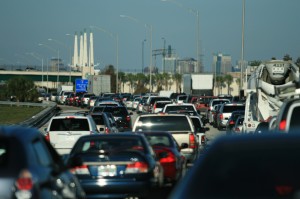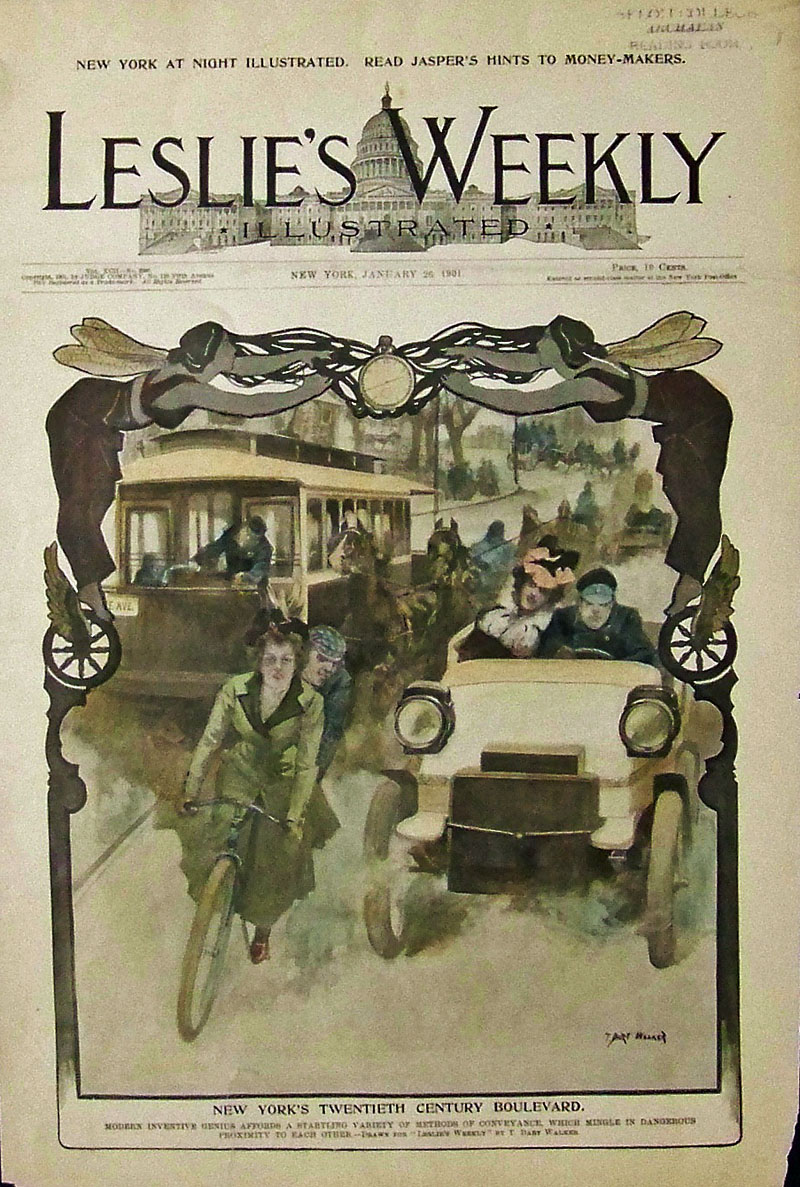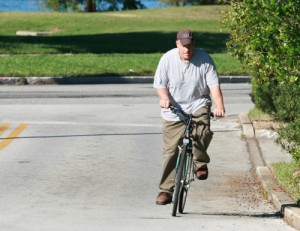About the Toolkit
The Bicycle Law Enforcement Toolkit is a place for law enforcement officials and cyclists to find answers and exchange information about the laws related to bicycling.
DISCLAIMER: The purpose of ASK GEO is to inform about bicycling laws. George Martin is not an attorney. The material provided here and through other means is for general informational purposes only and shall in no way constitute or be construed as legal advice by the officers, directors, agents or employees of the Florida Bicycle Association. If your experience in a court of law or on the streets differs from that presented, we want to know about it, but George Martin and FBA are not accountable for a ruling contrary to our interpretation of Florida Law or other consequences of cycling. You should seek legal advice on a particular situation.
THE LAWS
The laws about bicycling are difficult and confusing. In the traffic laws, there are few definitive statements that are beyond legal argument. With the exception of a few Appeals Court decisions, the laws, court interpretations, and enforcement practices change over time. At any given time, there is no single complete, consistent, definitive interpretation recognized throughout the state. There are provisions of the traffic laws that are enforced differently in different parts of the state, and some are scarcely enforced at all. The same terms may have the same or different meanings in the statutes and various agencies’ guiding documents.
We will assist officers and cyclists in understanding the various interpretations and the actions they can take to make our roadways safer and friendlier for all users.
Bias about Bicycles on the Roads
We live in a motor vehicle society. That engenders a certain opinion of bicyclists on the roads. Naturally, that may also influence an officer’s view of cyclists. We want to encourage officers to recognize their own bias and apply the laws impartially.
Creating a safer and more hospitable environment for cycling requires law enforcement equity.
Some may assume that since the Florida Bicycle Association is a bicycling advocacy organization, our view is prejudiced in favor of bicyclists. Of course, our mission is to improve conditions for bicycling in the state, but our position on the law is impartial. We seek law enforcement equity—citing the behaviors of cyclists that endanger themselves and others as well as the illegal and hazardous actions of motorists.

We also seek to correct the common misperceptions about the effect of slow vehicles on traffic flow and safety.
Our goal is accurate and valid citations applied in an unbiased manner. Citations that are not valid reflect poorly on the professional reputation of the officer and the department. Tickets that are not upheld in court don’t serve anyone well, even if the citation was valid. Rather than citations written based on what an officer thinks is the law and an unsafe action, we will encourage full understanding of the laws and safe and legal cycling practices.
THE BIG PICTURE: QUALITY OF LIFE
One Road, Many Users
 From early footpaths to recent highways to today’s multi-modal roadways, the intent has remained the same—to move people and goods from place to place. Roadways are for all users. People travel by car, bicycle, motorcycle, transit or still on foot.
From early footpaths to recent highways to today’s multi-modal roadways, the intent has remained the same—to move people and goods from place to place. Roadways are for all users. People travel by car, bicycle, motorcycle, transit or still on foot.
Today, as always, bicycles and all their human-powered cousins are legal vehicles in all 50 states and have all the rights and responsibilities to the roadways as car drivers do.
The use of human-powered vehicles has declined for many years as our transportation system grew with the help of cheap fuel. But even as most people have chosen motorized vehicles, the drivers of human-powered vehicles have maintained the fundamental right to use the roadways. The auto-age however, has created a cultural amnesia of the true purpose of the roadway system—that it is for moving people, not cars. Now, more than ever, we are returning to that fundamental understanding.
Changing Times

We are arriving at a new epoch for our country—climbing fuel prices, changing climates, and the need for better health are creating rapid changes in our transportation culture.
Many people are choosing human-powered vehicles to lessen the impact on the environment. Others need a solution to the rising prices of fuel and other high costs of car-ownership. At the same time, our nation’s health problems have been called an inactivity epidemic. With childhood obesity and diabetes crippling our youth and burdening our futures, Active Transportation using human-powered vehicles is being promoted by many health and government agencies as a potential solution to this problem.
People are adapting quickly to these changing times and dusting off their bikes to recover lost economics and adapt to changing lifestyles. As this continues, the character of traffic will change. Bicycles, human-powered velomobiles, electric assist bikes, motorcycles, scooters and low-powered electric vehicles will challenge the auto-age assumptions about traffic flow, speed and who the roads serve.
Challenges for Law Enforcement
As these changes occur, a clear understanding of roadway laws and user risks will be of paramount importance. A good understanding of bicycle laws will greatly assist with keeping the roadway and legal system running smoothly.
Many new bicycle drivers enter the road system with no understanding of their role as vehicle drivers. They make mistakes, disobey the rules and get injured.
At first glace, this may look like warm fuzzy idealist stuff. The truth is more and more bikes are coming to the roadway. Many new bicycle drivers enter the road system with no understanding of their role as vehicle drivers. They have no skill-set for riding in traffic, few skills handling their bikes and no understanding of the laws. As a result, they make mistakes, disobey rules and get injured.

Likewise, many automobile drivers also do not understand the role or rights of bicycle drivers. As a result, they make mistakes, violate rules, are uncivil and cause injury.
The Law Enforcement professional will often be the First Contact that these users face. Assuring that this contact is pro-active and supportive will greatly assist in making our roads safer and more diverse than ever before.
Our Role is to Help You
This website is one resource in the Toolkit. We are also developing a modular, interactive training program to assist Law Enforcement professionals, but that will take time. Through the process of real time discovery, we will post our findings on line for your use. Our role is to clarify the roadway statutes related to bicyclists and the roadway so that the common ground can be expanded and the roadway experience improved.
We offer a solid understanding of bicycle traffic statutes and how bicyclists fare best in their use of the roadway. One of our goals is to produce a culture of lawful, competent and safe cyclists in Florida. Law Enforcement is a critical component of that.
Help Us
This is a partnership. Your insights, experiences and expertise are key to our mission and to a product for all Law Enforcement agencies to use. We encourage you to ask questions and to share your experiences (and frustrations). With your input, the Toolkit product will become a comprehensive program which provides the resources officers need to meet the challenges of our changing traffic mix. In turn, this will help us to fulfill our mission and make the roads a safe, welcoming environment for all users.
